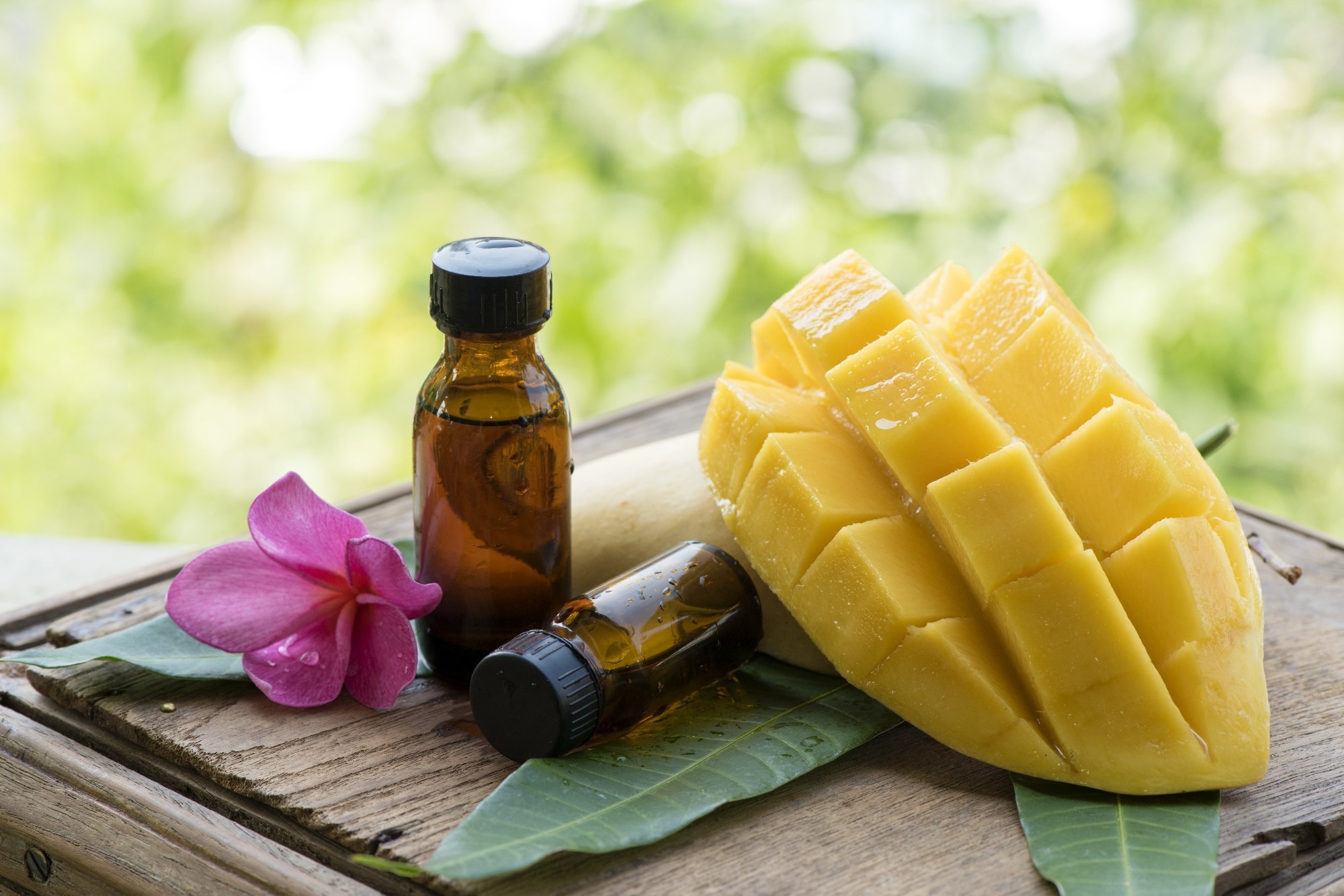A recent Scientific Reports study assessed the chemo-preventive potential of Mangiferin (MF) (mango) on azoxymethane (AOM)-mediated colonic aberrant crypt foci (ACF) in rats.
 Study: Mangiferin (mango) attenuates AOM-induced colorectal cancer in rat’s colon by augmentation of apoptotic proteins and antioxidant mechanisms. Image Credit: wasanajai/Shutterstock.com
Study: Mangiferin (mango) attenuates AOM-induced colorectal cancer in rat’s colon by augmentation of apoptotic proteins and antioxidant mechanisms. Image Credit: wasanajai/Shutterstock.com
Background
Colorectal cancer (CRC) has been recognized as the third most dominant cancer type that enhances mortality rates in both sexes. However, compared to males, females are marginally at a higher risk of acquiring colorectal cancer.
Some of the factors that increase the risk of this type of cancer are malnutrition, stress, obesity, alcohol, and smoking.
The AOM-based colon carcinogenesis model is the most popular method to evaluate the chemoprotective efficacy of a particular compound. Although many anti-cancer drugs against colorectal cancer have been developed, these synthetic chemicals are associated with many side effects that include hair loss, digestive problems, sexual disability, neuropathy, and nephropathy.
Therefore, there is a need for an alternative natural medicine or chemoprotective agent that has minimal side effects. These natural compounds could lower morbidity and mortality rates linked to colorectal cancer.
Secondary metabolites, such as alkaloids and flavonoids, extracted from plants have exhibited excellent chemotherapeutic properties without significant side effects. For instance, MF, a natural C-glucosylxantone compound, showed an inhibitory effect against several cancer cells, such as acute leukemia cells, HeLa S3 and KBvin cells, and colon cancer.
Although MF is predominantly present in Salicia chinesis (saptarangi) and Mangifera indica (Mango), this compound has also been extracted from the Anacardiaceae and Gentianaceae families.
Several studies have documented the antioxidant, antifungal, analgesic, antimicrobial, anti-diabetic, anti-inflammatory, cardioprotective, and anti-apoptotic properties of MF.
Interestingly, several drug-like properties have been identified in MF, including catechol moiety, weight of particles, and estimated partition coefficient (C Log P) number.
Despite identifying the therapeutic potential of MF in in vivo and in vitro experiments, the underlying mechanism of action for the same remains elusive.
About the study
The current study rationally designed an experiment to assess the chemoprotective potentials of MF in AOM-induced oxidative stress-mediated colorectal cancer in rats.
The in vivo gross morphology, immunohistochemistry, and the levels of inflammatory cytokines, antioxidants (enzymatic and non-enzymatic), and blood biochemical parameters were measured at varied MF dosages.
A total of fifteen rats were randomly segregated into three cages, i.e., group 1, group 2, and group 3. Group 1 rats received 10% Tween 20 and were referred to as the control group. Group 2 rats received a low dosage (250 mg/kg), and group 3 received a high dose (500 mg/kg) of MF by oral gavage.
Study findings
The current study observed that rats that only ingested AOM developed numerous colonic adenomas and adenocarcinomas with significant organ metastasis, particularly in ileocecal lymph nodes and cecum.
MF treatment resulted in a decrease in the volume and extent of colon adenomas and adenocarcinomas. Furthermore, the MF-treated rats exhibited a lower total ACF than the control group.
Previous studies have shown that different routes of administration of chemoprotective agents, such as oral, intramuscular, and subcutaneous administrations, have different incidence rates of colorectal cancer.
In this study, 15 mg/kg AOM was subcutaneously introduced to rats to evaluate its chemoprotective effect on MF.
The current study revealed that both MF supplementation doses were safe for two weeks, as no side effects occurred. However, a higher dose beyond 500 mg/kg could generate toxic effects.
The study rats were assessed every eight hours, and no abnormal physiological features were observed. The physical activity level and feed intake of the control group and MF-ingested rats were comparable.
Similarly, histological studies also exhibited similar liver and kidney tissue structures between the control and treated groups of rats. Compared to the MF-treated rats, an elevated mucin content and higher ACF values were found in the colon of the control rats.
Furthermore, compared to the treated group, the control group exhibited reduced Bax protein expression and increased β-catenin protein expression.
These results indicate a significant imbalance between these two proteins, which may cause cellular dysfunctions and alter the mitochondrial route of apoptosis.
Significant antioxidant potential of MF was observed through up-regulation of superoxide dismutase (SOD), catalase (CAT), glutathione peroxidase (GPx), and antioxidant enzymes; and down-regulation of malondialdehyde (MDA) level in colon tissue homogenates.
A significant increase in IL-6 and TNF-α cytokines levels and a reduction in anti-inflammatory cytokine (IL-10) were found in the blood of rats that only received AOM.
MF reduced immune and inflammatory responses via up-regulation of IL-6, TNF-α, and down-augmented IL-10 cytokines in rats.
Conclusions
Based on the experimental findings, MF treatment had no toxic effects or behavioral changes in treated rats throughout the study period. The current study presented the chemoprotective effects of MF using AOM-induced colon cancer in rats.
Taken together, MF could be used as an alternative intervention to treat colorectal cancers.